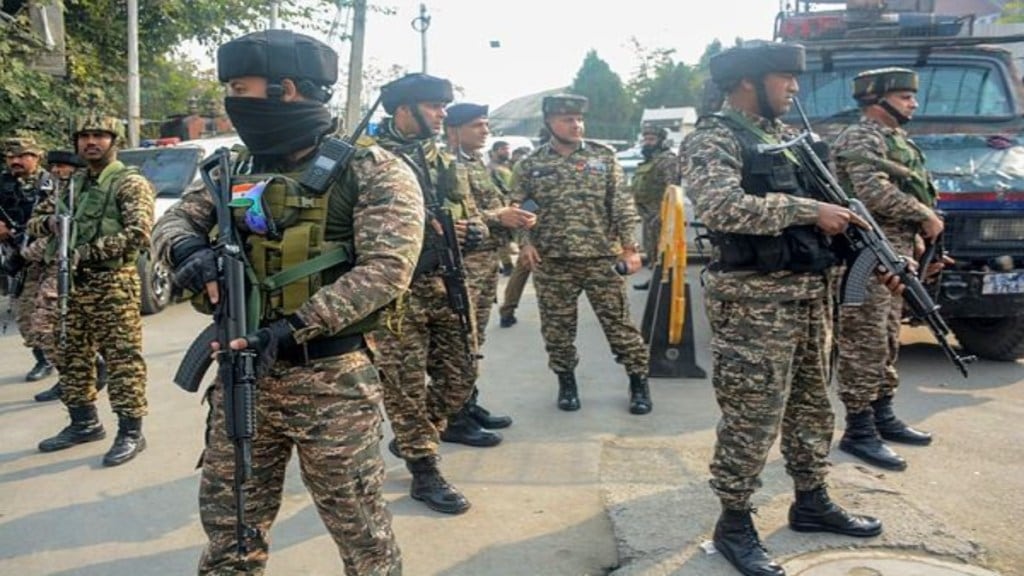In a recent anti-terror operation in Jammu and Kashmir, security forces achieved a significant breakthrough with the elimination of Usman, a high-ranking commander of the Lashkar-e-Taiba (LeT), a Pakistan-based terror group. This meticulously executed mission, marked by innovative tactics, showcased not only the strategic understanding of Indian security forces but also their adaptability — a quality that led to an unusual solution: biscuits.
The operation, which occurred in the densely populated Khanyar locality of Srinagar, unfolded early on a Saturday morning, marking the first major gunfight in the area in over two years. Srinagar’s Khanyar neighbourhood is known for its tightly packed homes and narrow alleys, complicating any military action, especially with the high risk of civilian casualties. As the day-long encounter progressed, Usman, a figure deeply entrenched in the Valley’s militant landscape, was killed in the crossfire, dealing a blow to terror networks in the region.
Usman’s history as a terrorist leader extends back to the early 2000s. He had long been involved in orchestrating attacks across the Valley, a familiarity gained from years of navigating Kashmir’s challenging terrain. After spending time in Pakistan, Usman reportedly returned to the region around 2016-17 and quickly resumed his activities. He became known for high-profile acts of violence, including the shooting of police inspector Masroor Wani last year, adding to his infamy within the intelligence community. When intelligence sources traced Usman to a residential area, the security agencies faced the challenge of executing a precision strike.
The Clever ‘Biscuit Plan
A crucial aspect of the planning phase — which lasted a painstaking nine hours — was to ensure minimal disturbance and eliminate the risk of collateral damage. In a residential neighbourhood, noise control is critical; any sounds, such as barking dogs, could potentially alert the target, allowing him to escape or harm civilians. This time, security officials made an unconventional decision: they equipped search teams with packets of biscuits to placate stray dogs that roamed the area.
In Srinagar, stray dogs are a common sight and can quickly disrupt covert operations by barking at unfamiliar activity. Armed with biscuits, the security personnel were able to approach the vicinity of Usman’s suspected hideout without drawing attention. The pre-dawn operation began just before Fajar (morning prayers), allowing forces to establish a cordon around a cluster of 30 homes in Khanyar with minimal commotion.
Major Militant Takedown in Srinagar
As the operation intensified, Usman responded aggressively, wielding an AK-47, a pistol, and a cache of grenades. A fierce gun battle ensued, with the militant using grenades in an attempt to resist arrest. Some of these grenades detonated, sparking a fire in the house where Usman was holed up. Fortunately, security forces contained the blaze before it spread, preventing further damage to neighbouring homes and ensuring civilian safety.
After several hours of intense gunfire, Usman was finally neutralised, marking the end of the standoff. Although four security personnel sustained injuries during the encounter, they are reported to be in stable condition, a testament to the efficiency of the team’s tactical manoeuvres and medical readiness.
This operation underscores the authorities’ resolve in combating terrorism, particularly against the Resistance Front, an offshoot of the LeT that has recently targeted non-local labourers and security personnel. By eliminating a figure as prominent as Usman, security forces have struck a major blow to the terror network, reinforcing their commitment to restoring stability in Jammu and Kashmir.
The Khanyar Operation serves as a powerful reminder of the daily challenges security personnel face in conflict zones. It also highlights their ingenuity — even the smallest, most unexpected details, like biscuits, can play a critical role in ensuring the success of high-stakes missions. This tactical triumph not only brings closure to a long-standing threat but also reinforces the continued vigilance and adaptability required to sustain peace in the region.
(With agency inputs)


